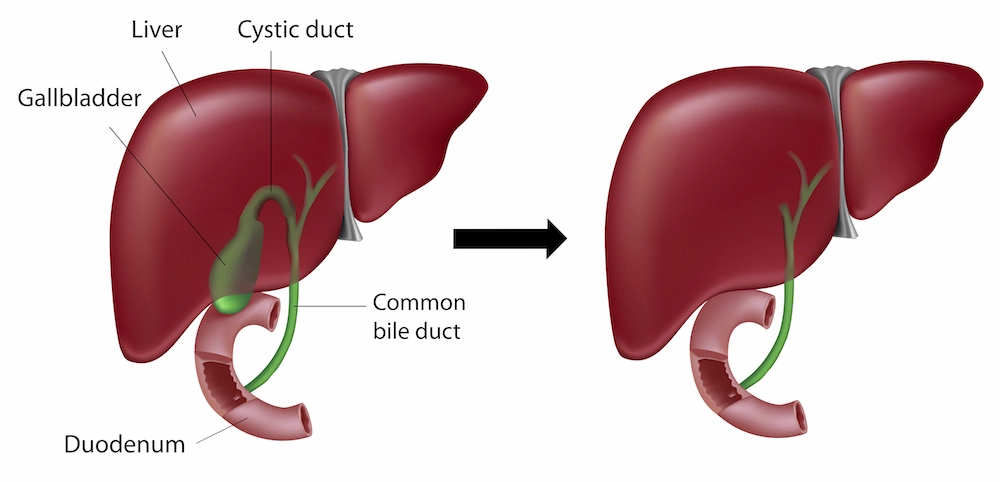Gallbladder Removal
We specialize in removal of the gallbladder, a safe and common surgical technique also known as cholecystectomy.
Gallbladder Removal
We specialize in removal of the gallbladder, a safe and common surgical technique also known as cholecystectomy.
During the procedure, our surgeon will remove the gallbladder without making a large incision. A telescope (laparoscope) is used to film the gallbladder, so it can be dissected and removed through a small abdominal incision.
A cholecystectomy is used to treat gallbladder disease, which is most commonly characterized by intermittent or continuous gallstones. These block the passage of bile in the cystic duct, causing right upper abdominal pain, as well as nausea, vomiting, heartburn, and back pain. A cholecystectomy will also treat other symptoms of gallbladder disease, such as chronic inflammation or infection, biliary sludge, and the presence of polyps or a mass.

What Does the Gallbladder Do?
The gallbladder is a pear shaped organ which sits on the undersurface of the liver. Its function is to store bile and empty it into the intestine, which it is connected to through a series of ducts or tubes. The gallbladder is only a backup supplier and storage reservoir for bile. The liver makes enough bile to help digest dietary fat, and will continue to do so once the gallbladder is removed.
How Does the Procedure Work?
When you undergo cholecystectomy, you will first be given general anesthesia. Once you are sleep, your surgeon will make several small incisions into the abdomen and pump carbon dioxide gas into the abdominal cavity, to create space to work and see your gallbladder. This gas is harmless and will be eliminated by your body’s circulation.
Your surgeon will then insert the laparoscope and surgical instruments through the small incisions in the abdomen. The bile duct and artery at the base of the gallbladder are identified and closed off using small metal clips. The surgeon may also check if there are any other stones within the ducts. He can do this by injecting dye into the bile ducts and/or taking an X-ray known as a cholangiogram. Large stones and bile in the gallbladder are removed, deflating the gallbladder so it can be guided to the incision in your navel and removed. The abdominal incisions are then dressed with gauze or bandages.
Around 700,000 laparoscopic cholecystectomies are performed in the United States every year, and they are considered one of the safest laparoscopic procedures.
However, as with any other surgical procedure, complications may occur. Intraoperative bleeding that cannot be quickly controlled may require conversion from a laparoscopic to an open cholecystectomy. Infection and injury to surrounding organs and the bile ducts are other possible risks, but are also risks in the open procedure for gallbladder removal.
Step into Wellness: Your Path to a
Lighter, Brighter Future Starts Now
You can trust your cholecystectomy to the skilled, board-certified surgeon at Alabama Surgical Associates (ASA) in Huntsville, AL. For more information about your cholecystectomy, please contact our office.
Dr. Darrell Doucette has either authored or reviewed and approved this content.
Page Updated: